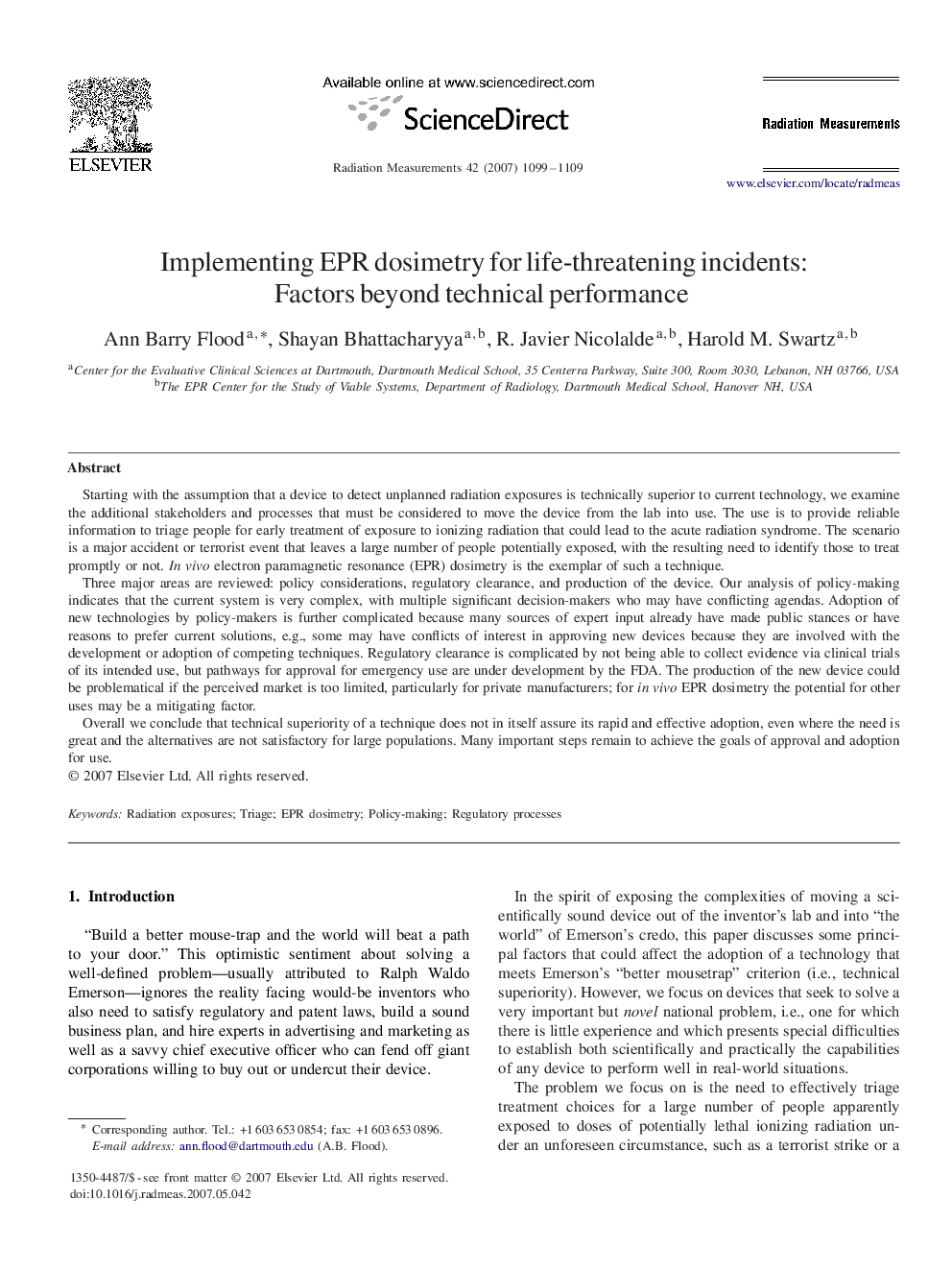| Article ID | Journal | Published Year | Pages | File Type |
|---|---|---|---|---|
| 1888989 | Radiation Measurements | 2007 | 11 Pages |
Starting with the assumption that a device to detect unplanned radiation exposures is technically superior to current technology, we examine the additional stakeholders and processes that must be considered to move the device from the lab into use. The use is to provide reliable information to triage people for early treatment of exposure to ionizing radiation that could lead to the acute radiation syndrome. The scenario is a major accident or terrorist event that leaves a large number of people potentially exposed, with the resulting need to identify those to treat promptly or not. In vivo electron paramagnetic resonance (EPR) dosimetry is the exemplar of such a technique.Three major areas are reviewed: policy considerations, regulatory clearance, and production of the device. Our analysis of policy-making indicates that the current system is very complex, with multiple significant decision-makers who may have conflicting agendas. Adoption of new technologies by policy-makers is further complicated because many sources of expert input already have made public stances or have reasons to prefer current solutions, e.g., some may have conflicts of interest in approving new devices because they are involved with the development or adoption of competing techniques. Regulatory clearance is complicated by not being able to collect evidence via clinical trials of its intended use, but pathways for approval for emergency use are under development by the FDA. The production of the new device could be problematical if the perceived market is too limited, particularly for private manufacturers; for in vivo EPR dosimetry the potential for other uses may be a mitigating factor.Overall we conclude that technical superiority of a technique does not in itself assure its rapid and effective adoption, even where the need is great and the alternatives are not satisfactory for large populations. Many important steps remain to achieve the goals of approval and adoption for use.
